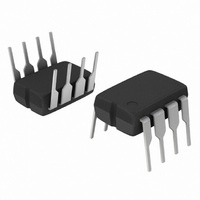LM2574N-015G ON Semiconductor, LM2574N-015G Datasheet - Page 16

LM2574N-015G
Manufacturer Part Number
LM2574N-015G
Description
IC REG SW 0.5A 15V OUTPUT 8-DIP
Manufacturer
ON Semiconductor
Type
Step-Down (Buck)r
Datasheet
1.LM2574N-3.3G.pdf
(26 pages)
Specifications of LM2574N-015G
Internal Switch(s)
Yes
Synchronous Rectifier
No
Number Of Outputs
1
Voltage - Output
15V
Current - Output
500mA
Frequency - Switching
52kHz
Voltage - Input
4.75 ~ 40 V
Operating Temperature
-40°C ~ 125°C
Mounting Type
Through Hole
Package / Case
8-DIP (0.300", 7.62mm)
Output Voltage
15 V
Output Current
0.5 A
Input Voltage
4.75 V to 40 V
Switching Frequency
52 KHz
Operating Temperature Range
- 40 C to + 125 C
Mounting Style
Through Hole
Duty Cycle (max)
98 %
Lead Free Status / RoHS Status
Lead free / RoHS Compliant
Power - Output
-
Lead Free Status / Rohs Status
Lead free / RoHS Compliant
Available stocks
Company
Part Number
Manufacturer
Quantity
Price
Company:
Part Number:
LM2574N-015G
Manufacturer:
ON Semiconductor
Quantity:
135
Inductor
switching power supply designs. The style of the core and
the winding technique used in the magnetic component’s
design have a great influence on the reliability of the overall
power supply.
high voltage spikes generated by the rate of transitions in
current within the switching power supply, and the
possibility of core saturation can arise during an abnormal
operational mode. Voltage spikes can cause the
semiconductors to enter avalanche breakdown and the part
can instantly fail if enough energy is applied. It can also
cause significant RFI (Radio Frequency Interference) and
EMI (Electro−Magnetic Interference) problems.
Continuous and Discontinuous Mode of Operation
continuous and the discontinuous modes of operation. The
regulator works in the continuous mode when loads are
relatively heavy, the current flows through the inductor
continuously and never falls to zero. Under light load
conditions, the circuit will be forced to the discontinuous
mode when inductor current falls to zero for certain period
of time (see Figure 24 and Figure 25). Each mode has
distinctively different operating characteristics, which can
affect the regulator performance and requirements. In many
cases the preferred mode of operation is the continuous
mode. It offers greater output power, lower peak currents in
the switch, inductor and diode, and can have a lower output
ripple voltage. On the other hand it does require larger
inductor values to keep the inductor current flowing
continuously, especially at low output load currents and/or
high input voltages.
selection guide for the LM2574 regulator was added to this
data sheet (Figures 19 through 23). This guide assumes that
the regulator is operating in the continuous mode, and
selects an inductor that will allow a peak−to−peak inductor
ripple current to be a certain percentage of the maximum
design load current. This percentage is allowed to change as
different design load currents are selected. For light loads
(less than approximately 0.2 A) it may be desirable to
operate the regulator in the discontinuous mode, because the
inductor value and size can be kept relatively low.
Consequently, the percentage of inductor peak−to−peak
The magnetic components are the cornerstone of all
Using an improper or poorly designed inductor can cause
The LM2574 step−down converter can operate in both the
To simplify the inductor selection process, an inductor
LM2574, NCV2574
http://onsemi.com
16
current increases. This discontinuous mode of operation is
perfectly acceptable for this type of switching converter.
Any buck regulator will be forced to enter discontinuous
mode if the load current is light enough.
Selecting the Right Inductor Style
are core material, cost, the output power of the power supply,
the physical volume the inductor must fit within, and the
amount of EMI (Electro−Magnetic Interference) shielding
that the core must provide. There are many different styles
of inductors available, such as pot core, E−core, toroid and
bobbin core, as well as different core materials such as
ferrites and powdered iron from different manufacturers.
be the best choice. Since the magnetic flux is contained
within the core, it generates less EMI, reducing noise
problems in sensitive circuits. The least expensive is the
bobbin core type, which consists of wire wound on a ferrite
rod core. This type of inductor generates more EMI due to
the fact that its core is open, and the magnetic flux is not
contained within the core.
same printed circuit board, open core magnetics can cause
interference between two or more of the regulator circuits,
especially at high currents due to mutual coupling. A toroid,
pot core or E−core (closed magnetic structure) should be
used in such applications.
Do Not Operate an Inductor Beyond its Maximum
Rated Current
cause the inductor to overheat because of the copper wire
losses, or the core may saturate. Core saturation occurs when
the flux density is too high and consequently the cross
sectional area of the core can no longer support additional
lines of magnetic flux.
inductance value decreases rapidly and the inductor begins
to look mainly resistive. It has only the dc resistance of the
winding. This can cause the switch current to rise very
rapidly and force the LM2574 internal switch into
cycle−by−cycle current limit, thus reducing the dc output
load current. This can also result in overheating of the
inductor and/or the LM2574. Different inductor types have
different saturation characteristics, and this should be kept
in mind when selecting an inductor.
Some important considerations when selecting a core type
For high quality design regulators the toroid core seems to
When multiple switching regulators are located on the
Exceeding an inductor’s maximum current rating may
This causes the permeability of the core to drop, the













